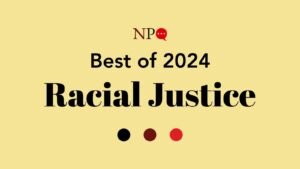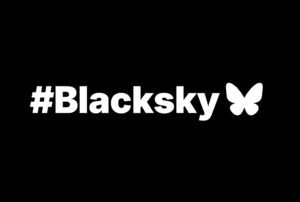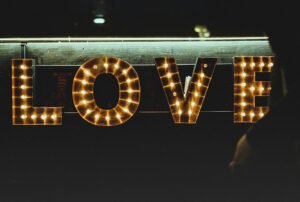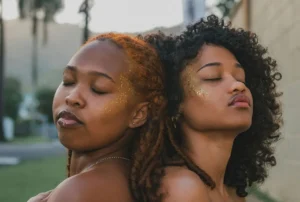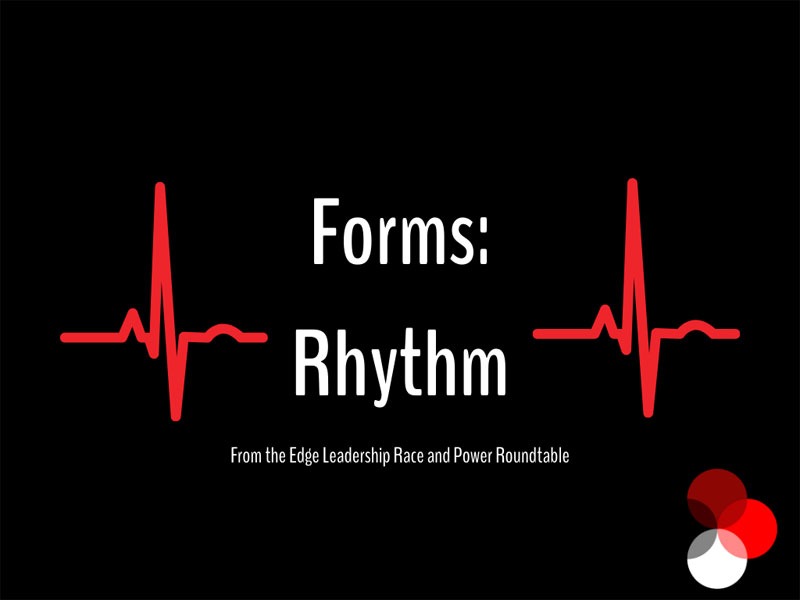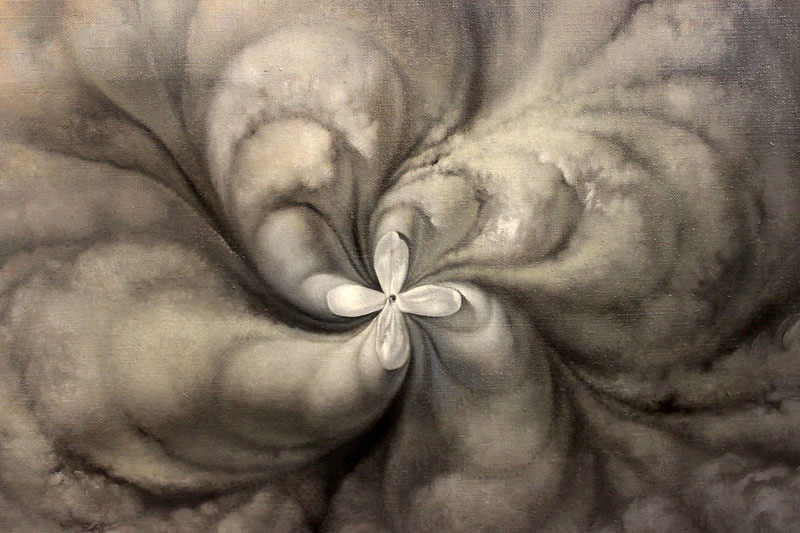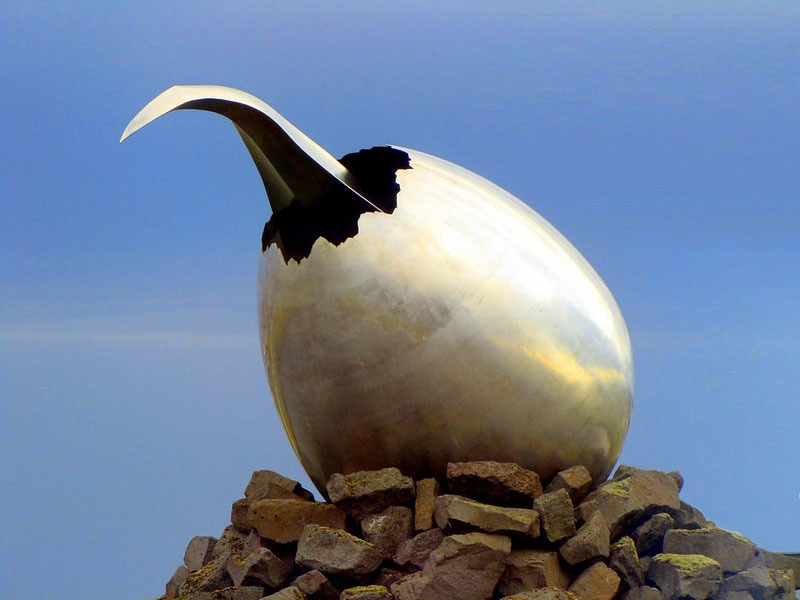
Edge Leadership, a social change R+D platform hosted by NPQ), recently invited Caroline Levine, author of Forms: Whole, Rhythm, Hierarchy, Network, as the first guest of our new online show. (See excerpts here, here, and an intro article here.) As we explored the concept of forms, not surprisingly, much of the conversation focused on hierarchy, which Levine notes we’re used to thinking of as “the form of injustice.”
As we dug into the idea that hierarchy affords a way to hold complexity—based on the assumption that higher levels hold more complexity than the levels below, and that levels can be added to hold increasing complexity—Levine shared that this kind of thinking feels dangerous. She notes that we don’t know if we can hold complexity until we’re given the opportunity to do so, and suggests rotating roles in organizations and focusing on how to build complexity as a skill.
But we were intrigued by the idea of dangerous thoughts. What makes a thought dangerous? And dangerous for whom?
I asked her to say more about what makes hierarchy dangerous. Levine, who is the head of the English department at Cornell University, responded,
In the arts we have the freedom to think crazy thoughts. We’re allowed to think things that don’t exist, or that aren’t practical. We can go to these imaginary places that don’t hurt anybody, just in order to think that thought. But I do think that an overriding issue at the moment is justice. I don’t want to feed injustice; that feels like a different kind of danger. There’s the danger of doing something idealistic, crazy—that I’m up for, and I’m used to—but there’s a danger of feeding injustice, and hierarchy sounds like it’s going to go to the injustice side. But I actually want to think about it in a way that it doesn’t, that we can find the things in it that don’t go there. But that scares us because we’re so used to thinking about it as the form of injustice.
Audience member Gibrán Rivera, a social change consultant, offered a different take on dangerous thoughts.
I think the fear that we have, whether we’re conscious of it or not, is of stepping outside of the bounds of what is what are “thinkable” thoughts. So, Cyndi mentioned the ideological forms that bind so-called “movement think” together. And when you speak about hierarchy, I appreciate the kindness with which you bring it, which is you don’t want to perpetrate something that creates injustice. I think that’s good thinking.
But I imagine that for most of us, what is also there is actually a fear of breaking with a dogma, because we know what can happen to us when we do. And I think there’s a whole lot of unthinkable thought right now. I think the parameters of what we can think about are too tightly defined. And they get shut down because of the very possibility that they can point in a dangerous direction.
And, so, when I heard you talking about hierarchy, I was aware of the confusion that we have between domination hierarchies and nested developmental hierarchies. Each one of us can think of a different stage in our lives when we thought differently, when we looked at the world differently. And if we saw that person walk into the room right now, we would recognize them, but they wouldn’t recognize us in the same way because somehow we have integrated who we were into who we are. We’ve gained some altitude; we can see more than we could see then. And so we each have that lived experience. So we know what a nested developmental hierarchy looks and feels like, or we can think of it.
In condemning hierarchy, we deprive ourselves of building tracks for that kind of development. This is often addressed in spiritual evolution. That’s a space that often wrestles with the idea that when you can’t draw hierarchies, then you actually can’t even speak of truth. That was all good when it was us throwing stones at the established institutions, but it’s a lot less fun when the Right is questioning the regimes of truth. Now it starts to feel scary to us. And so even being able to say, “Wait a minute, this is true and that is not,” is a powerful assertion.
Western liberal thought is shaking right now, and that feels scary in many ways because we don’t have a space for debate. At the same time, we know that Western liberal thought centers whiteness. There are all kinds of ways in which that which is determined “expert” or “master” is aligned with whiteness. But then, do we say that I can’t know more about something than somebody else does—because I have practiced it, because I’ve looked at it, because I’ve devoted my life force to getting better at it? I feel like you lose too much when you lose developmental hierarchies. Which is, I think, what Cyndi was saying about the capacity to grow, to hold greater levels of complexity. It is because you integrate and include what was before into what is now, which is the shape of evolution.
This shows up in the development of Edge Leadership. The platform was designed as a liberatory space—that’s what leaders of color told NPQ they wanted. You know what happens when you don’t have a space like that and you start one? You have to learn how to be in that space. So how does one protect that liberatory intention without using any of the systems that perpetuate what we’re trying to get away from? How does one incentivize, for example, rather than have rules? And when does one draw a boundary on behavior that is detracting from the purpose of this form? In other words, how does one create a form for liberation and protect it?
Sign up for our free newsletters
Subscribe to NPQ's newsletters to have our top stories delivered directly to your inbox.
By signing up, you agree to our privacy policy and terms of use, and to receive messages from NPQ and our partners.
In trying to do that, I found that it is akin to curatorial leadership. In social change we are not very familiar with the concept. People expect collective leadership right now. It feels dangerous to speak of anything different. People are very suspicious of anything that isn’t a neutral leader bringing people together to develop the will of the group from scratch. At Edge, it gets really personal because it’s about how people show up. What does it look like for us not to close off to the idea that we have a responsibility to develop ourselves? That while we’re changing social conditions, we are also in this as people developing?
Levine adds,
Something that I have thought about in my own development as a white leader is the ways in which I don’t see the experiences of my colleagues of color, my students of color, in their full complexity. That is the kind of double consciousness that Du Bois talks about, where, in fact, people of color see more because they see both the dominant experience and the marginalized, or oppressed, experience. And so, to think about that as a kind of richness of knowledge that has to be in institutions is a less personal way to think about it. But, it has been incredibly important in my own learning to see, “Oh, this is why I don’t know enough to hold the complexity of this institution, because I actually don’t see the daily micro-aggressions. I don’t see it, you know, I don’t experience it. So what if we took the idea of a developmental hierarchy and made the contributions of multiple knowledges to that part of what complexity was, and THAT was the hierarchy? I think it would really feel different. It would feel like a different story of hierarchy.
Marisa Arrona shared what happened when she tried do just this in her work.
I lead the Shared Safety Initiative at Alliance for Safety and Justice. The project came from the question, “What if we started organizing crime survivors, mostly from Black and Brown communities, and really center survivor needs?” We started this flip on the safety narrative and approach years ago. And the way we summed up “shared safety” was that it is not just the absence of crime, it’s the presence of well -being. Then we asked survivors, “How do we drive up the drivers of well-being?” In addition to asking, “How do you address criminogenic factors?” Like the grandmother on the corner providing culturally competent counseling to families because they can’t find it within the structures that systems have created. So this is a lot about trying to turn back the clock and undo all of these really harmful things that have happened, and at the same time creating the world we all wanted in the first place. And how do you do that at the same time?
Even the language. In L.A. County, there was a big deal around creating an alternatives-to-incarceration workgroup. But when you center the conversation on incarceration and punishment, every step you take back from that feels like less accountability. So I wish we would have just called it “accountability alternatives.” And so, in these workgroups, when crime survivors and people who had been in jail jumped up and said, “We need more implicit bias training for the sheriff’s office, and we in the neighborhood, we know a lot. We have knowledge, right? We could teach some of that.”
And immediately a sheriff’s deputy jumped up and said, “Well, we can’t do that, because everything we do has to be post certified.” And not a single person or elected official stood up to support that crime survivor until we in Alliance For Justice said, “Well, the question should be, ‘How do we build the capacity within communities to get post certification?’ Or even, ‘Why do we need post certification? Who does that? Who defines the criteria?’” Either build the capacity of people with lived experience to comply with structural criteria, or question the structural criteria. That deputy’s response chilled any other survivor wanting to offer suggestions.
So how do we do the repair needed on the forms that exist, while we’re trying to build new ones? How do we deal with people who work to keep the system as it is, while you’re doing the translation work for the people who don’t see it yet?
This may be an example of what Levine describes as forms colliding. What happens when one is at that intersection of forms, is getting pinched, and there’s no infrastructure in that space to support those leaders. It is dangerous in a different way, just as it was dangerous for the crime survivors or formerly incarcerated people to be seen as the ones with expertise.
I also notice that, as social change practitioners, we oftentimes want to be super knowledgeable about how we’re oppressed. I think it’s just as, if not more, important to be knowledgeable about how to be free. So when I think about this idea of dangerous thoughts, that feels really dangerous to a lot of people. It feels like I’m absolving dominant people, not holding them accountable.
I recently had a conversation with a librarian who told me that in her predominantly white town, she is being called on to hold white people in the neighborhood accountable for their racism. She’s asks, “What is this term accountable? How do you hold anyone else accountable? I can only hold myself accountable.”
Let’s interrogate these terms—dangerous, hierarchy, accountability. Dangerous for whom? What kind of danger? The danger of sharing power or the danger, or the danger of creating social change? What kind of hierarchy? Towards what end? Is there something beyond accountability, something greater, more in tune with the world we seek?


